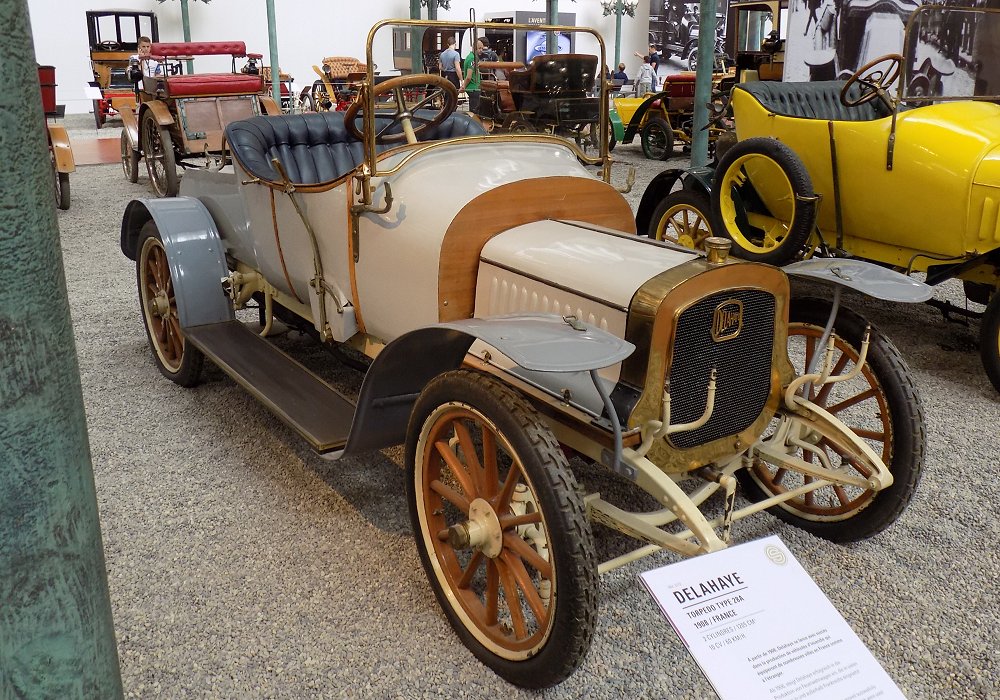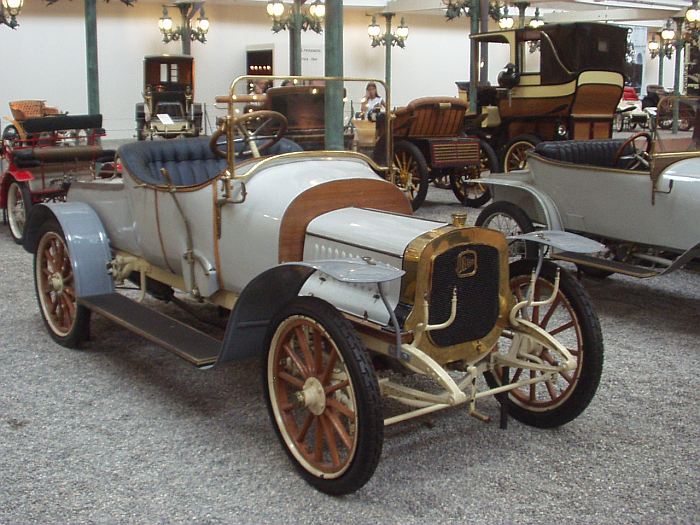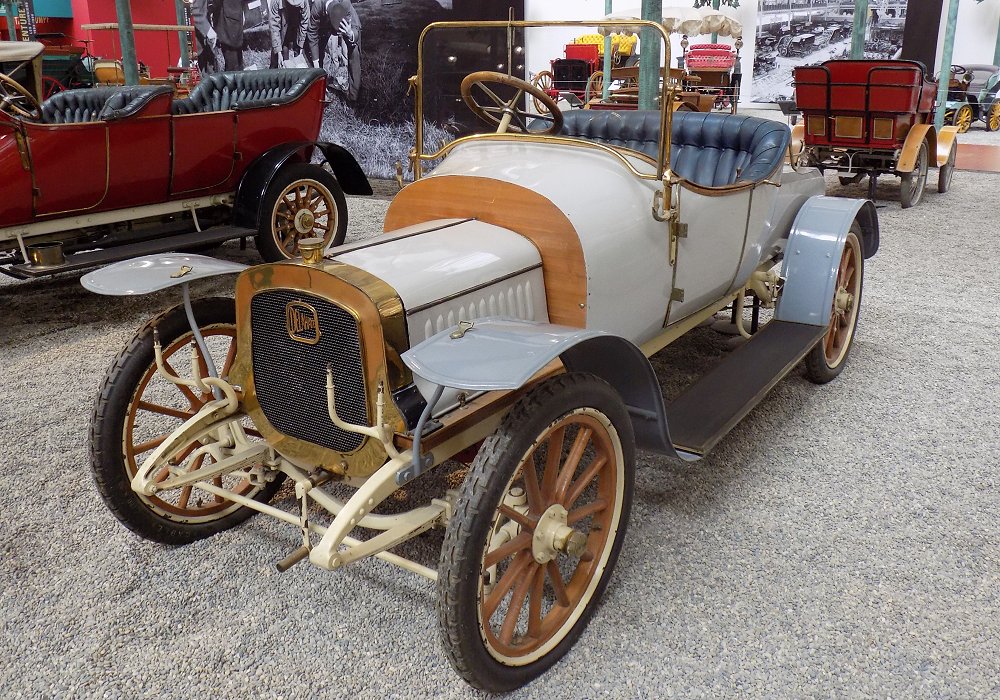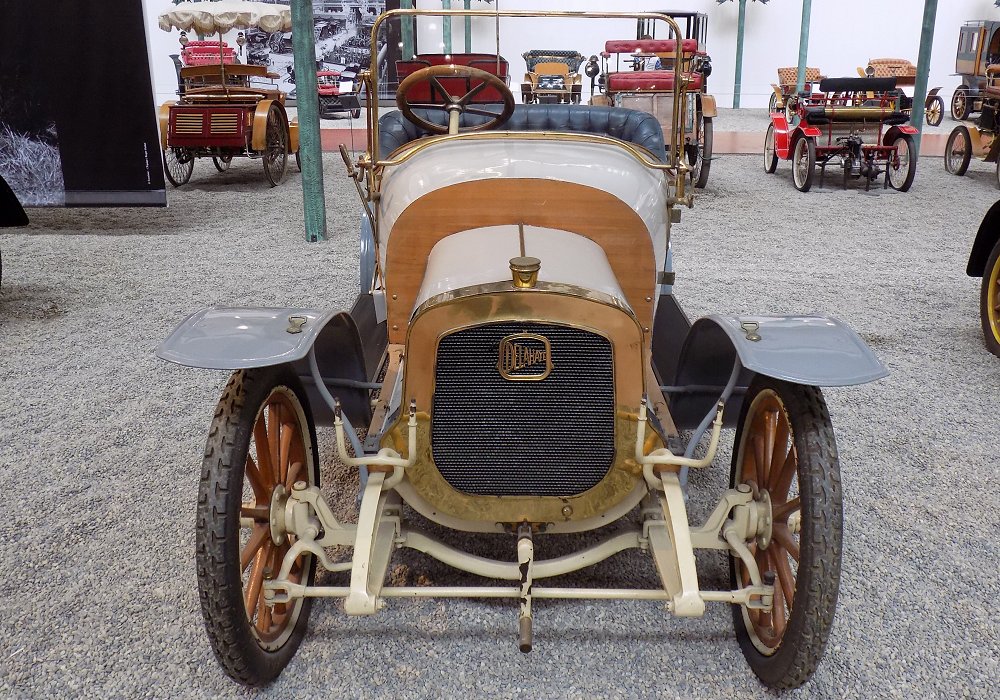Description
The Delahaye Type 28A Torpedo was a mid-1920s offering from one of France’s most respected manufacturers, known for engineering precision and understated elegance. This particular model reflects Delahaye’s transition from utilitarian and military vehicles toward more refined passenger cars, with the “Torpedo” body style offering a blend of practicality and style for open-air touring.
Introduced around 1924, the Type 28A was powered by a four-cylinder engine, likely in the 2.0 to 2.5-litre range, typical of Delahaye’s medium-displacement designs of the period. The engine featured a side-valve configuration and was capable of delivering between 30 and 40 horsepower. While not high-performing by racing standards, this output was sufficient for comfortable road travel, especially in an era when average cruising speeds were modest.
The car’s drivetrain included a 4-speed manual gearbox, which provided flexibility over varying terrain and road conditions. Delahaye had developed a reputation for smooth and reliable gearboxes, and the 28A continued this tradition. Power was transmitted via a rear-wheel-drive layout, using a shaft drive—by then the standard for refined touring vehicles, replacing the chain systems common in earlier decades.
The chassis was constructed from pressed steel in a ladder frame layout, offering both strength and adaptability for a variety of body styles. The Torpedo variant, with its long bonnet, open passenger compartment, and streamlined rear section, was popular among customers who sought an elegant yet sporty silhouette. Its design included four doors, a folding canvas roof, and occasional side-curtains for weather protection. The front and rear fenders were modestly flared, framing large artillery-style wheels or wire wheels depending on customer preference.
Inside, the cabin was arranged with two rows of seats and often finished in leather or leatherette. Instrumentation on the dashboard was simple but sufficient, including a speedometer, oil pressure gauge, ammeter, and ignition controls. Delahaye’s attention to ergonomic layout and tasteful detailing was evident, even in their more affordable models.
Suspension used semi-elliptic leaf springs on both axles, a conventional but proven system that allowed for a relatively smooth ride on the rough roads of the 1920s. The braking system employed mechanically actuated drum brakes, at first only on the rear wheels, though some later variants included four-wheel braking, depending on market and production year.
The Torpedo body style appealed to touring drivers who appreciated open motoring with the flexibility of covering up during inclement weather. It was often chosen by middle- and upper-class buyers, and sometimes even by military officers or officials, for use as a dignified staff car. The long bonnet and proportioned rear deck gave the Type 28A an air of subtle elegance without the flamboyance of the luxury marques.
Delahaye models of this period were not produced in vast numbers, and they maintained a reputation for meticulous build quality rather than volume. The Type 28A sat in the brand’s lineup as a bridge between its more basic cars and the more elaborate six-cylinder and later coachbuilt models of the 1930s.
Surviving examples of the Delahaye Type 28A Torpedo are extremely rare today. When preserved or restored, they are admired for their period correctness, light handling, and handsome proportions—qualities that make them well-suited to vintage rallies and concours events. The model stands as a fine example of Delahaye’s understated excellence during the interwar years, prior to its rise to fame with grand tourers and luxury sports cars in the late 1930s.



